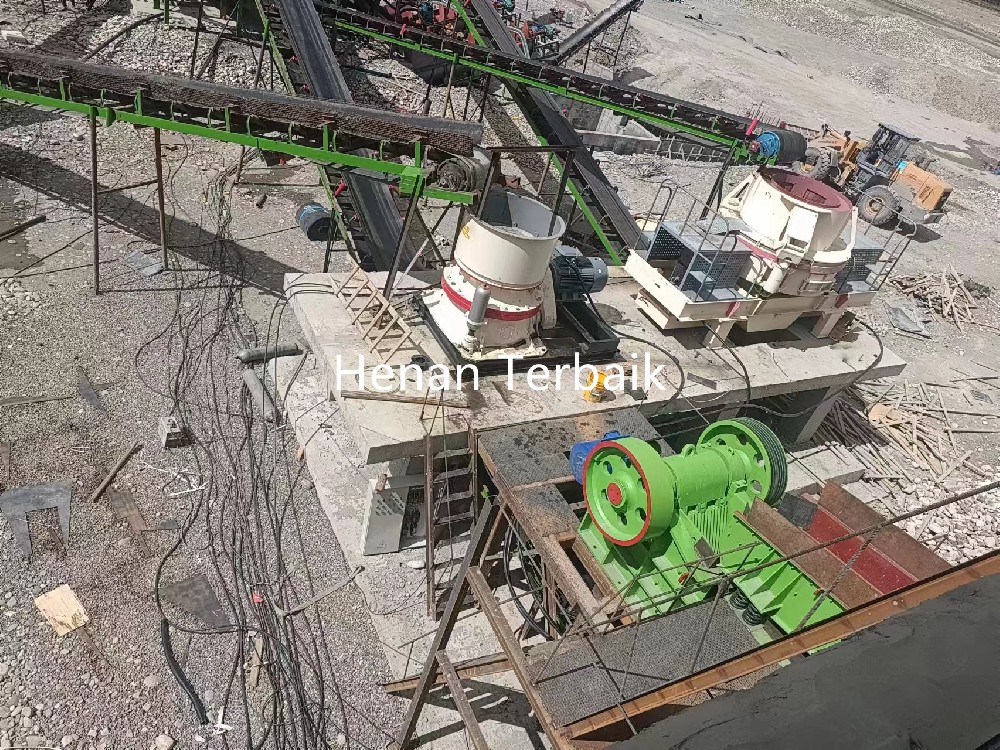
Explore Terbaikmachinery's reliable spiral classifiers designed for precise particle separation in mineral processing operations. Our spiral separators utilize advanced technology to efficiently classify particles based on size, shape, and density, enhancing ore beneficiation and material separation processes. Trust Terbaikmachinery for expertly crafted classification solutions that ensure optimal performance and maximize mineral recovery.
A spiral classifier and a spiral sand washing machine are used to separate solid particles in slurry based on their sedimentation speed. Typically, the spiral classifier works in conjunction with a ball mill to create a closed-circuit system, where coarse particles are returned to the ball mill for further grinding.
The classifier significantly impacts the mill's efficiency, making the selection of grading equipment crucial in the beneficiation process. Spiral classifiers are available in single and double spiral designs, based on the number of screw shafts.
Scope of Application
Spiral classifiers are widely used in ore dressing plants and ball mills to form a closed cycle, splitting ore sand. They are also used in gravity concentrators to grade ore sand and fine mud, and for particle size classification in metal beneficiation processes. Additionally, they are employed for desliming and dehydration in ore washing operations. These machines are characterized by their simple structure, reliable operation, and ease of use.
Applications
Ore Dressing Plants: Forming closed cycles with ball mills and splitting ore sand.
Gravity Concentrators: Grading ore and metal, and classifying pulp by particle size.
Desliming and Dewatering: Used in ore washing operations for removing slimes and excess water.
In summary, spiral classifiers are essential for improving mill efficiency and are widely used in various mineral processing applications due to their simplicity, reliability, and ease of operation.

Low Energy Consumption: The spiral classifier reduces energy consumption by 50% compared to other horizontal and vertical classifiers, while maintaining the same processing capacity.
High Efficiency: With the same processing capacity, the classification efficiency is 50% higher than that of other horizontal and vertical classifiers.
High Precision: Achieves high-grade fineness, completely eliminating oversized particles and screen residue in the product.
Low Power Consumption: Operates with minimal power usage.
Durability: Built for heavy-duty operations and long working life.
Self-Contained Spiral Lifting Device: Equipped with a powerful self-contained spiral lifting device.
Continuous Spiral Raking: Features continuous spiral raking for consistent performance.
High Classifying Efficiency: Provides high efficiency in classification tasks.
Versatile Weir Height: Offers a wide choice of weir heights for different applications.
Rigid Construction: Features a rigid tank and substructure for stability and durability.
Customizable Tank Design: Available in various tank designs to meet specific needs.
Industry Versatility: Serves a wide range of industries with its versatile design and capabilities.

The spiral classifier stands out due to its energy efficiency, high classification efficiency, and precise particle separation. Its durable design, low power consumption, and customizable features make it suitable for various industrial applications. With its self-contained spiral lifting device and continuous spiral raking, it ensures consistent and reliable performance.
Convenient transportation, crawler walking, no damage to the road, equipped with multi-functional accessories, Drived by oil and electricity.
The whole crushing plant adopts all-wheel drive to realize rotating direction in place, with perfect protection function, especially suitable for narrow and complex site.
The crawler crushing plant could be optional for jaw crusher, impatct crusher, cone crusher, VSI crusher etc.
The spiral classifier operates on the principle that solid particles have different settling velocities in a liquid due to variations in their size and specific gravity. Fine ore particles, which settle more slowly, float in the water and flow out, while coarser particles, which settle faster, sink to the bottom of the trough.
Separation Process
Sedimentation: The difference in sedimentation velocity causes fine particles to float and overflow, while coarse particles settle at the bottom.
Movement and Scrubbing: The coarse particles are pushed forward by a spiral impeller, and as sand and gravel move, they are scrubbed by water flow to wash and separate impurities and soil.
Tailings Discharge: The cleaned material falls onto the front end of a tailings dry discharge screen. The vibration device generates an exciting force, causing the material to move linearly and discharge from the port.
Moisture Removal: Moisture from the material falls through the screen mesh into the screen box, entering the back-end storage tank via the overflow device.
Cyclone Separation: The slurry pump then pumps the material into a cyclone separator. Here, centrifugal force concentrates the material, and qualified materials proceed to a dewatering screen.
Dewatering: The drainage device removes excess water, and the remaining wastewater is directed to a water repellent device for final discharge.
Summary
The spiral classifier efficiently separates fine and coarse particles based on their settling velocities in water. Through sedimentation, scrubbing, and vibration, it cleans and sorts the material, ultimately removing moisture and discharging the wastewater. This process ensures effective classification and preparation of materials for further processing.


*The output will vary according to different materials, feed particle size and other factors



